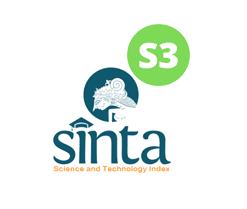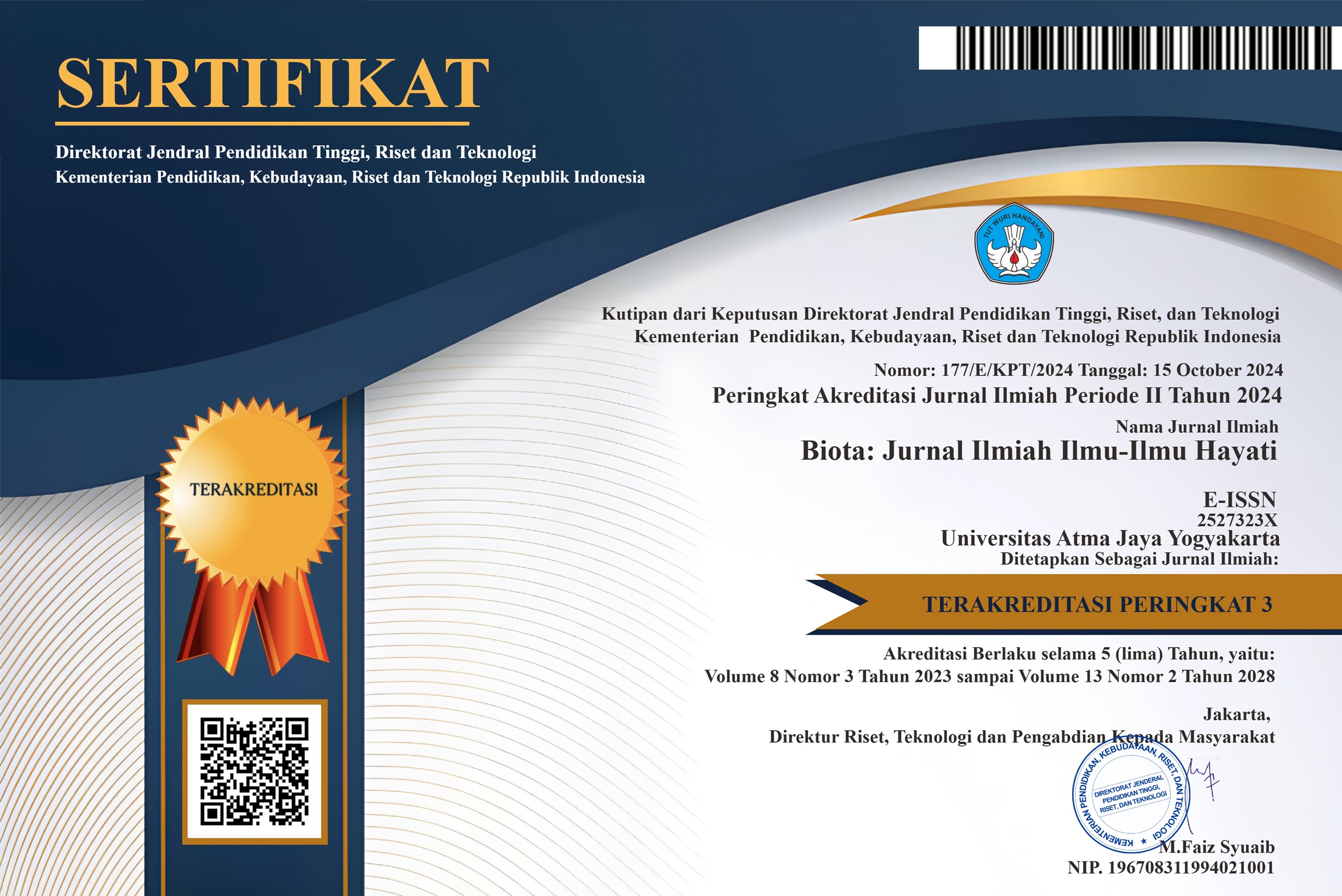Variasi Genetik pada Rusa Sambar (Rusa unicolor) di Penangkaran, Kabupaten Penajam, Kalimantan Timur
DOI:
https://doi.org/10.24002/biota.v15i3.2602Keywords:
Sambar deer, Rusa unicolor, molecular, captive breeding, genetic diversityAbstract
Sambar deer (Rusa unicolor) is the largest Indonesian deer species. The largest population of captivation is located at Penajam district, East Borneo (UPTD). First population was introduced in 1990 with four individuals. The use of molecular marker was aimed to identify and characterise the level of genetic diversity within the UPTD population as well as to identify a possible of botolneck population genetic status. This study discussed the relevance of the result for management purposes of captivation. The results indicated that sambar deer populatin (n=38) had an average genetic distance (d) in population as 0.006 with nucleotide diversity (π) being 0.0159). A total of 43.48% of the population was homogeneous that showed no nucleotide differences among individuals.Downloads
Published
15-10-2019
How to Cite
Wirdateti, W., Brahmantyo, B., Semiadi, G., & Reksodihardjo, A. (2019). Variasi Genetik pada Rusa Sambar (Rusa unicolor) di Penangkaran, Kabupaten Penajam, Kalimantan Timur. Biota : Jurnal Ilmiah Ilmu-Ilmu Hayati, 15(3), 441–447. https://doi.org/10.24002/biota.v15i3.2602
Issue
Section
Articles
License
Authors who publish with Biota : Jurnal Ilmiah Ilmu-Ilmu Hayati agree to the following terms:
- Authors retain copyright and grant the Biota : Jurnal Ilmiah Ilmu-Ilmu Hayati right of first publication. Licensed under a Creative Commons Attribution-NonCommercial 4.0 International License that allows others to share the work with an acknowledgment of the work's authorship and initial publication in this journal.
- Authors are able to enter into separate, additional contractual arrangements for the non-exclusive distribution of the journal's published version of the work (e.g., post it to an institutional repository or publish it in a book), with an acknowledgment of its initial publication in Biota : Jurnal Ilmiah Ilmu-Ilmu Hayati, and as long as Author is not used for commercial purposes.












